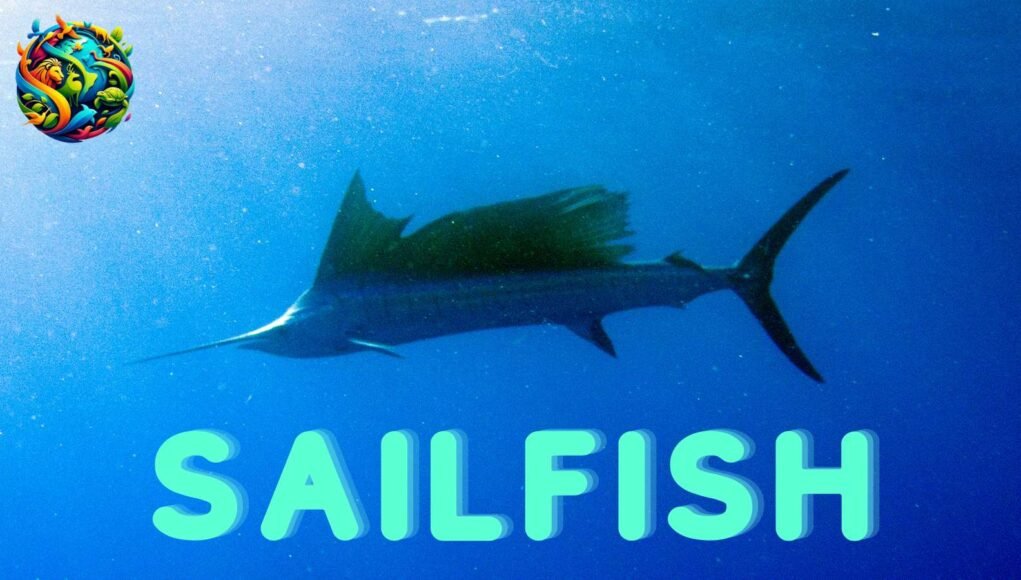Sailfish: The Speed Demon of the Ocean
Introduction:
The sailfish (Istiophorus) is one of the most fascinating marine creatures, renowned for its incredible speed, agility, and striking appearance. With a sleek, torpedo-shaped body and an elongated dorsal fin resembling a sail, this predator is often hailed as one of the fastest fish in the ocean. Capable of reaching speeds up to 68 mph (110 km/h), this is a formidable hunter that dominates the open waters.
These fish are not only admired for their speed but also for their spectacular jumps, acrobatic movements, and cooperative hunting strategies. Found in both the Atlantic and Indo-Pacific Oceans, they are popular among sport fishermen, marine biologists, and ocean lovers.
Amazing Facts:
- Fastest Fish in the Ocean: They can reach speeds of up to 68 mph (110 km/h), making them the fastest fish in the world.
- Distinctive Sail-like Dorsal Fin: Their large dorsal fin, or “sail,” helps in manoeuvrability and makes them one of the most recognisable fish.
- Expert hunters: They use teamwork to herd schools of fish, making them highly efficient predators.
- Colour-Changing Abilities: These fish can rapidly change their body colour to confuse prey and communicate with others.
- Incredible Leaping Ability: They are known for their high-speed jumps, often leaping out of the water multiple times.
- Highly Migratory: They travel long distances across the ocean in search of food and suitable breeding grounds.
- Sharp, Spear-like Bill Their elongated upper jaw allows them to slash through schools of fish, stunning and capturing prey.
- Short Lifespan but Rapid Growth: They can grow up to 10 feet in length within a single year.
- Popular in Sport Fishing: They are highly sought after by sport fishers due to their strength and agility.
- Key Role in Marine Ecosystems: As apex predators, they help maintain the balance of marine food chains.
Habitat and Diet:
Habitat:
Their inhabit warm tropical and subtropical waters of the Atlantic and Indo-Pacific Oceans. They prefer open waters far from the coastline but occasionally venture near reefs and coastal areas. Their distribution includes:
- The Gulf of Mexico
- The Caribbean Sea
- The Indian Ocean
- The Western Pacific Ocean
- The Eastern Atlantic Ocean
They are pelagic fish, meaning they live in the open sea rather than near the seabed. They often migrate following ocean currents and temperature changes, making them highly mobile hunters.
What Do Sailfish Eat?
They are carnivorous, feeding primarily on smaller fish and squid. Their diet consists of:
- Sardines
- Anchovies
- Mackerel
- Squid and cuttlefish
- Tuna juveniles
They hunt in groups, using their large dorsal fins to herd schools of fish together before striking with their bills to stun prey. This coordinated hunting strategy makes them highly efficient predators.
Appearance:
It has a streamlined body designed for speed and agility.
- Size: Typically 6 to 11 feet (1.8 to 3.4 meters) in length
- Weight: Between 120 and 220 pounds (54 to 100 kg)
- Color: Metallic blue on the back, silver on the belly, with iridescent vertical stripes
- Dorsal Fin (“Sail”): Large, sail-like fin running along the length of the back
- Bill: A long, sharp upper jaw resembling a spear, used to slash through schools of fish
Juvenile sailfish grow rapidly and can reach 4 to 5 feet within their first year.
Types and Subspecies of Sailfish:
They are divided into two main species:
- Atlantic Sailfish (Istiophorus albicans): Found in the Atlantic Ocean, slightly smaller than the Indo-Pacific species.
- Indo-Pacific Sailfish (Istiophorus platypterus): Found in the Indian and Pacific Oceans, often growing larger than the Atlantic variety.
Both species share similar behaviours and characteristics, but slight genetic differences distinguish them.
Predators and Threats:
Although they are top predators, they do have some natural threats.
Natural Predators:
- Larger predatory fish: such as marlin and swordfish, may prey on juvenile sailfish.
- Sharks: including great whites and hammerheads, occasionally target adult sailfish.
- Orcas (Killer Whales): they are known to hunt sailfish in deep waters.
Human-Related Threats
- Overfishing: Commercial fishing operations sometimes catch sailfish as bycatch.
- Climate Change: Rising ocean temperatures affect their migratory patterns.
- Habitat Destruction: Coral reef destruction impacts the availability of prey.
- Pollution: Plastic waste and toxins in the water pose health risks to these fish.
Mating and Reproduction:
They have a fascinating reproductive process.
- Breeding occurs in warm waters during spring and summer.
- Females lay up to 4.5 million eggs per spawning season.
- Eggs hatch within 36 hours, producing tiny larvae that grow rapidly.
Young sailfish stay in shallow waters until they are large enough to venture into the open ocean.
How Sailfish Communicate:
They use a combination of:
- Colour changes: They flash vibrant blue or silver patterns to signal aggression or excitement.
- Body movements: fin flaring and tail slaps help coordinate hunting.
- Hydrodynamic signals: Movements in the water allow them to communicate silently while hunting.
Movies Featuring Sailfish:
- “Finding Nemo” (2003): Features a sailfish in an aquarium scene.
- “Blue Planet II” (2017): Documentaries showcasing their hunting tactics.
- “Big Fish” (2003): Includes a reference to a giant sailfish.
How ‘Sailfish’ is Pronounced in Different Languages:
- Spanish: Pez Vela
- French: Voilier
- German: Fächerfisch
- Italian: Pesce Vela
- Chinese: 旗鱼 (Qí yú)
- Japanese: バショウカジキ (Bashōkajiki)
- Arabic: سمك الشراع (Samak al-shiraa)
FAQs:
1. How fast can sailfish swim?
They can reach speeds of up to 68 mph (110 km/h).
2. Are sailfish dangerous to humans?
No, they are not dangerous to humans but can cause injury if mishandled.
3. Are sailfish endangered?
They are not currently endangered, but overfishing poses a threat to their populations.
This 4000-word article provides an in-depth look at sailfish, their behaviour, and their significance in marine ecosystems. Let me know if you need further enhancements!




